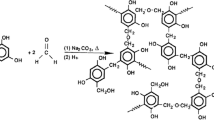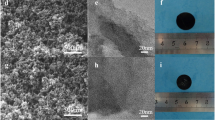Abstract
Carbon xerogels, synthesized through the resorcinol–formaldehyde polycondensation and subsequently dried under subcritical condition, have been studied as electrodes for supercapacitors. In particular, the influence of the catalyst concentration has been investigated by systematically changing the amount of catalyst (Na2CO3) utilized to synthesize the xerogels. To clarify the effect of such variable, both the surface properties and the electrochemical behavior of xerogel-based supercapacitors have been examined. From the xerogels characterization, it can be inferred that the amount of catalyst used has a strong influence on the properties of the material. Contrary to what happens with carbon aerogels, the best properties are obtained with the xerogels synthesized with the least amount of catalyst: in this case the highest measured specific capacitance of the supercapacitor cells, which is assembled coupling two symmetric electrodes in series, is 25 F/g, value that corresponds to a single-electrode specific capacitance of 100 F/g. The maximum energy storage capacity in an aqueous electrolyte is 3.1 Wh/kg. Using more concentrated catalyst solutions, the gel microstructure becomes finer, composed of smaller particles and pores, which in turns leads to an increase of the capillary drying stresses and to the collapse of the organic structure. Consequently, the shrinkage of the gels is high and the final carbon xerogels do not posses sufficient surface area and porosity to store a significative amount of energy.






Similar content being viewed by others

References
Inagaki M, Konno H, Tanaike O (2010) J Power Sources 195(24):7880
Simon P, Gogotsi Y (2008) Nat Mater 7(11):845
Al-Muhtaseb SA, Ritter JA (2003) Adv Mater 15(2):101
Arbizzani C, Beninati S, Lazzari M, Soavi F, Mastragostino M (2007) J Power Sources 174(2):648
Job N, Thery A, Pirard R, Marien J, Kocon L, Rouzaud J, Beguin F, Pirard J (2005) Carbon 43(12):2481
Job N (2004) Analysis 5:619
Sharma CS, Kulkarni MM, Sharma A, Madou M (2009) Chem Eng Sci 64:1536
Elkhatat AM, Al-Muhtaseb SA (2011) Adv Mater 23:2887. doi:10.1002/adma.201100283
Lin C, Ritter JA (1997) Carbon 35(9):1271
Lin C, Ritter JA, Popov BN (1999) J Electrochem Soc 146:3639
Lee YJ, Jung JC, Park S, Seo JG, Baeck S-H, Yoon JR, Yi J, Song IK (2010) Curr Appl Phys 10(3):947
Kim SJ, Hwang SW, Hyun SH (2005) J Mater Sci 40(3):725. doi:10.1007/s10853-005-6313-x
Fairenjimenez D, Carrascomarin F, Morenocastilla C (2006) Carbon 44(11):2301
Reuß M, Ratke L (2008) J Sol–Gel Sci Technol 47(1):74
Sing KSW, Everett DH, Haul RAW, Moscou L, Pierotti RA, Raquerol J, Siemieniewska T (1985) Pure Appl Chem 57(4):603
Taberna PL, Simon P, Fauvarque JF (2003) J Electrochem Soc 150(3):A292
Acknowledgements
G.D. Soraru and P.R. Aravind acknowledge the financial contribution from Provincia Autonoma di Trento under the project NAOMI and the European Community, through a Marie Curie Initial Training Network "FUNEA" through the contract MC-ITN- 264873.
Author information
Authors and Affiliations
Corresponding author
Rights and permissions
About this article
Cite this article
Mezzavilla, S., Zanella, C., Aravind, P.R. et al. Carbon xerogels as electrodes for supercapacitors. The influence of the catalyst concentration on the microstructure and on the electrochemical properties. J Mater Sci 47, 7175–7180 (2012). https://doi.org/10.1007/s10853-012-6662-1
Received:
Accepted:
Published:
Issue Date:
DOI: https://doi.org/10.1007/s10853-012-6662-1



